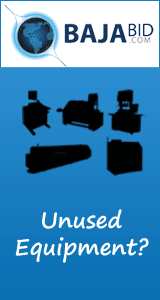Hey Gyver: If you don�t mind (which you don�t have any choice about, because I�m going to do it anyhow, cause it�s MY word processor), I�m going to respond genericly, but still be directed to your question.
Much of the following is paraphrased from a paper written by Doug Pauls. Before moving on, it�s too bad Brian isn�t here, because I�m sure he�d have good contributions to make. Enough of the pandering!!! This topic has tons of issues involved in it. High points are:
There are three instances where the testing accordong to J-STD-001B (J1B), Appendix D is required.
1 When your customer requires it. After all, your customer drives the bus, even if he/she doesn�t have a road map and should not have a license.
2 When your customer feels that the Appendix D testing is the only acceptable way to demonstrate the Materials Compatibility requirement of J1B, paragraph 3.4, which tells you, the assembler, that all of the materials and processes you use should be compatible with each other. A good, sound policy.
3 If you are using a flux that is not contained in the following J-STD-004 designations: ROL0, ROL1, REL0, REL1, ORL0, or ORL1 (cleaned). This requirement is found in J-STD-001B, paragraph 4.2.
Consider all the potential changes implied in J1B, paragraph 3.4 that could cause you to repeat the Appendix D protocol or other compatibility testing. Changes in: fabricator, solder mask, metalization, laminate, flux, paste, reflow profiles, wave profiles, cleaning chemistry, cleaning parameters, coating types, and coating thinners. Whew!!! Scary, eh??
In summary, everyone should check for compatibility. Only Class 3 assemblers are required to show compatibility. Anyone can use Appendix D to demonstrate compatibility, but alternative methods are perfectly acceptable too.
Now, if your customer does specify that you have to do Appendix D as a demonstrator of materials and process compatibility, you need to come to a very specific understanding on what kinds of changes in the process require, in his/her eyes, a repeat of the Appendix D (or other) testing. How much latitude on reflow or cleaning parameter variation? Can you change to another paste or flux that is highly similar to the qualified flux (e.g. going from a 5% solids to a 3% solids of the same flux)? If your customer requires Appendix D testing for every minor variation, you test lab operator might just be able to afford that yacht yet.
As you can see, this is a complicated topic. We can drill on this further, if anyone is interested. A variety of other documents are available for the education of the process professional. It is suggested that these reports be reviewed and digested (burp).
EMPF Report RR0013 - An In-Depth Look At Ionic Cleanliness Testing. Contact Toni O�Connor, EMPF, 317-655-3673. This report examines numerous facets of ionic cleanliness testing, and the suitability of these devices as analytical tools for process evaluation.
IPC-TP-1091: The Layman�s Guide to Qualifying a New Flux to MT-0002 and MIL-STD-2000A. This was one of my earlier efforts aimed at MIL-STD-2000A and MT-0002 (same as J-STD-001A). The paper discusses elements of residue characterization. Many of the salient points of that paper apply to J-STD-001B as well.
J-STD-001 Handbook. With the move to performance based specifications, much of the how-to information was removed from J1B. Rather than loose such information, the IPC chartered a task group to capture the information and expand the document into an all inclusive reference work for soldering processes.
IPC-TR-467. A technical paper that Jim Maguire (Boeing) and Doug Pauls (Contamination Studies Laboratory) authored. It sets down some of the reasoning behind the way Appendix D was structured the way it was.
IPC-9201, The SIR Handbook. Since J1B is primarily SIR driven, a review of this document will increase your understanding of SIR testing.
Further, SIR and ionic contamination are not new topics on SMTnet.
Ta
Dave F
reply »
![]() Hello all,
Recently we changed the vendor of flux. However,...
- Nov 17, 1999
by
Gyver
Hello all,
Recently we changed the vendor of flux. However,...
- Nov 17, 1999
by
Gyver
![]()
![]()
![]() Hey Gyver: If you don�t mind (which you don�t have any cho...
- Nov 17, 1999
by
davef
Hey Gyver: If you don�t mind (which you don�t have any cho...
- Nov 17, 1999
by
davef
![]()







